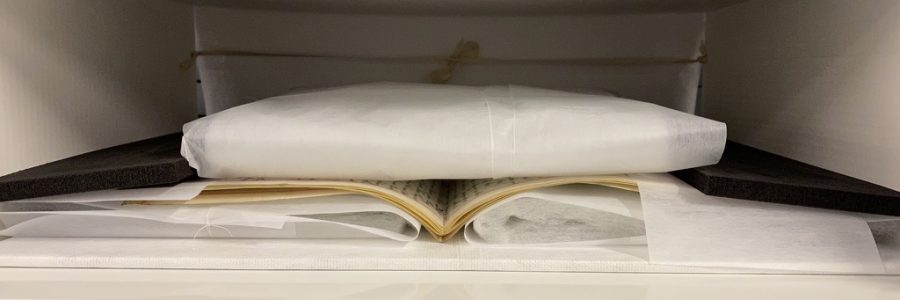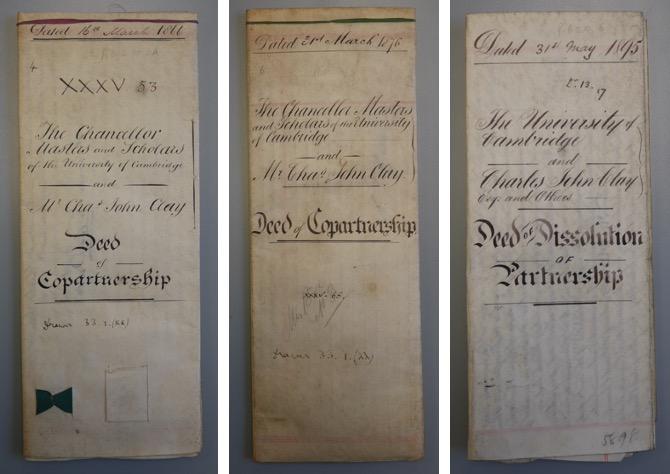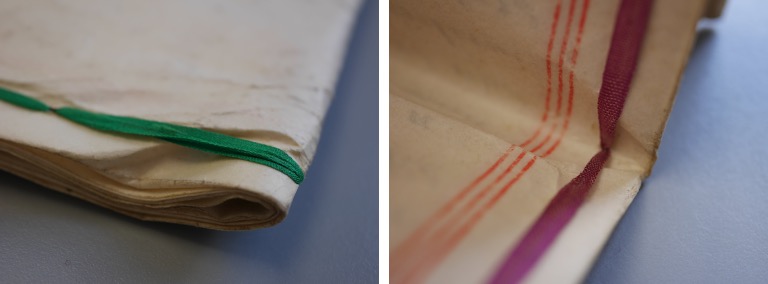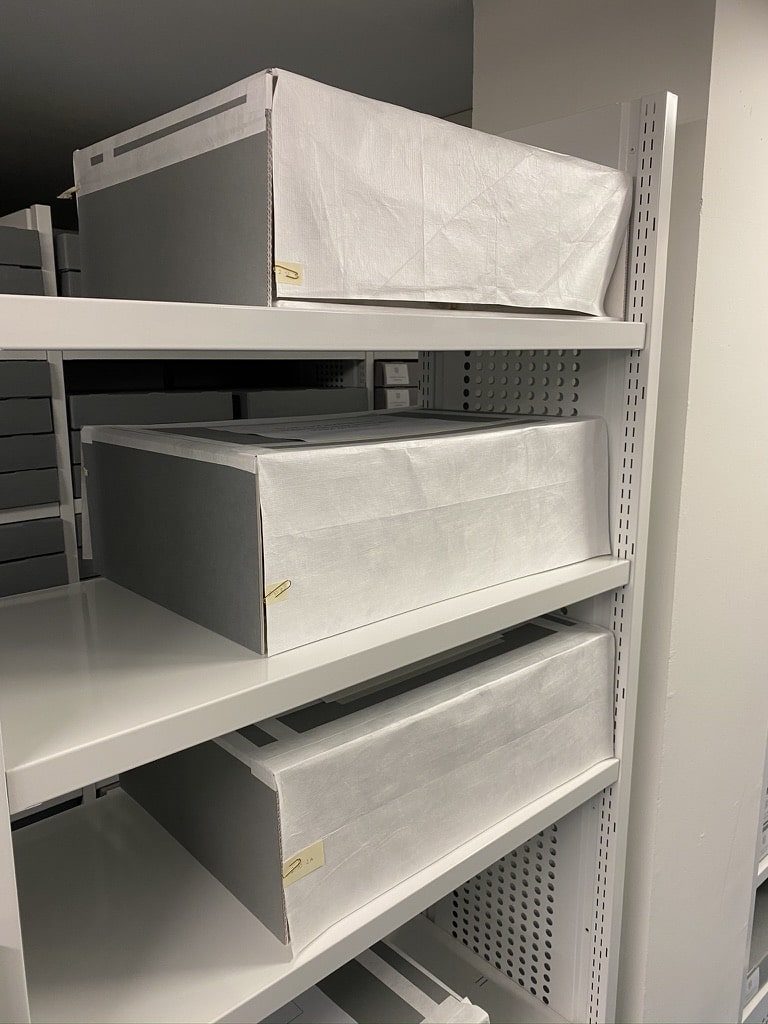
When time to relax is just what the (parchment!) doctor ordered…
Although the Cambridge University Libraries conservators have been working in new and innovative ways since being physically separated from our collections a number of weeks ago, there are certainly some items in our collection that thrive on such long periods of stillness, and some quiet alone-time!
In early March 2020, prior to the closure of the Cambridge University Libraries, our Cambridge University Press Conservator, Sally Kilby, began to undertake conservation treatments on five nineteenth century parchment deeds.
Having been tightly folded and stored as such for many years, it has been difficult to fully assess their condition. It is clear, however, that they are parchment, that they feature red and black ink throughout, and that four are stab-sewn along the left edge with green or purple ribbon.

Although difficult to access in their current condition, of particular conservation concern are the wax seals that have been applied to all five items. Applied small single-faced seals and large double-faced pendant ‘papered’ seals have been caught in the parchment folds, and as a result, although the general condition of the seal material itself is sound, cracking and losses have occurred. In some cases, small detached pieces of seal are caught in the folds of the parchment, while in other areas it is only the paper element of the seal that keeps the broken pieces together.

In order to conserve the broken seals and further assess the media within the deeds, the parchment deeds must be unfolded. With the folds well-set and the parchment beginning to stiffen around the resulting creases, it is tempting to use humidification to relax the parchment, followed by un-folding and re-tensioning. Indeed, controlled humidification is often the best option for unfolding stiff, aged parchment – but it can carry risk to the item, as parchment is highly hygroscopic and the introduction of too much moisture can result in damage to collagen fibres or even gelatinisation of the parchment.
As an alternative (or even as a pre-humidification treatment stage), it pays to determine whether simply the moisture (or humidity) in the air is enough to allow the parchment to be slowly unfolded and encouraged to relax into an unfolded state. In the case of the five deeds, the parchment is still (relatively!) young, pliable and in sound condition with minimal areas of stiffening or brittleness. Although light, controlled humidification may be necessary to allow for the final relaxation of tight folds and creases, it is likely that the items will respond well to slow, supported unfolding in a controlled environment where minimal fluctuations in temperature and humidity will allow the parchment to settle into its new position.
The deeds were measured and assessed, with notes taken on pre-existing creases and undulations in the parchment to ensure that any changes throughout the unfolding process could be monitored. Custom shelters were created to prevent dust contamination and to act as a further barrier against relative humidity and temperature fluctuations.

Each deed was then assessed to determine the extent to which it could be unfolded without resistance. Custom supports were created to support these openings, and light packs of wadding created to provide very slight pressure on the partial openings to secure them in place. These openings will be gradually increased over a period of months, until they are used to their new, open positions. For now, they are resting easy in their secure shelters, with their first openings having plenty of time to adjust and relax, care of the COVID-19 lockdown!


Once they have been through several stages of gradual opening and relaxation, the deeds will be reassessed to determine whether further humidification and re-tensioning is required. The wax seals will then be fully assessed, repaired and consolidated – stay tuned for the wax seal update, once the Press Conservator is back on site!
